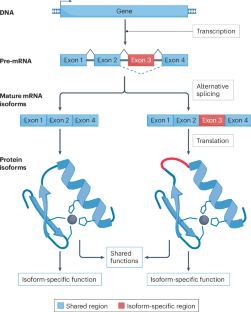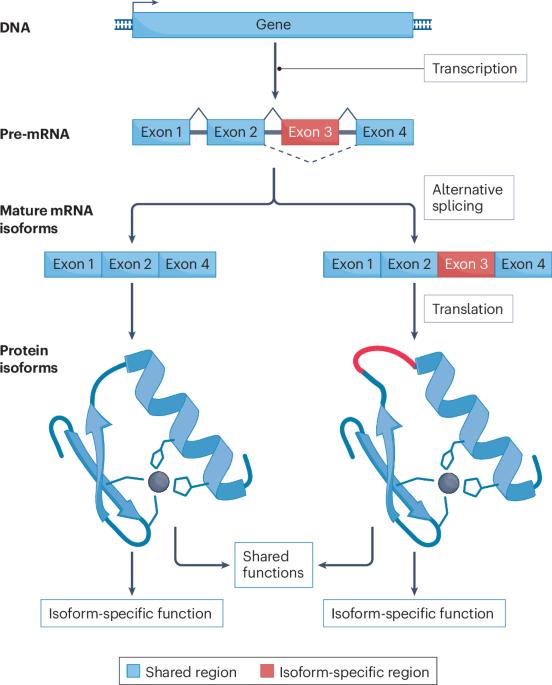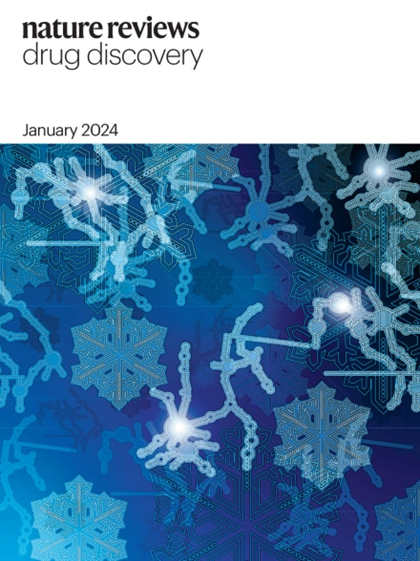Protein isoform-centric therapeutics: expanding targets and increasing specificity
IF 122.7
1区 医学
Q1 BIOTECHNOLOGY & APPLIED MICROBIOLOGY
引用次数: 0
Abstract
Most protein-coding genes produce multiple protein isoforms; however, these isoforms are commonly neglected in drug discovery. The expression of protein isoforms can be specific to a disease, tissue and/or developmental stage, and this specific expression can be harnessed to achieve greater drug specificity than pan-targeting of all gene products and to enable improved treatments for diseases caused by aberrant protein isoform production. In recent years, several protein isoform-centric therapeutics have been developed. Here, we collate these studies and clinical trials to highlight three distinct but overlapping modes of action for protein isoform-centric drugs: isoform switching, isoform introduction or depletion, and modulation of isoform activity. In addition, we discuss how protein isoforms can be used clinically as targets for cell type-specific drug delivery and immunotherapy, diagnostic biomarkers and sources of cancer neoantigens. Collectively, we emphasize the value of a focus on isoforms as a route to discovering drugs with greater specificity and fewer adverse effects. This approach could enable the targeting of proteins for which pan-inhibition of all isoforms is toxic and poorly tolerated. Multiple protein isoforms arise from most genes by alternative RNA splicing and other mechanisms, but these isoforms are often neglected in drug discovery. This Review discusses the modes of action of emerging therapeutics that focus on protein isoforms as well as how isoforms can serve as biomarkers and facilitate targeted drug delivery.


以蛋白质同工酶为中心的疗法:扩大靶点,提高特异性
大多数蛋白质编码基因都能产生多种蛋白质同工酶;然而,这些同工酶在药物研发中通常被忽视。蛋白质同工酶的表达对某种疾病、组织和/或发育阶段可能具有特异性,利用这种特异性表达可以获得比泛靶向所有基因产物更强的药物特异性,并能改善对因蛋白质同工酶异常产生而导致的疾病的治疗。近年来,以蛋白质同工酶为中心的几种疗法已经开发出来。在此,我们对这些研究和临床试验进行了整理,重点介绍以蛋白质同工酶为中心的药物的三种不同但又相互重叠的作用模式:同工酶转换、同工酶导入或耗竭以及同工酶活性调节。此外,我们还讨论了蛋白质同工酶如何在临床上用作细胞类型特异性给药和免疫疗法的靶点、诊断生物标志物以及癌症新抗原的来源。总之,我们强调了将同工酶作为发现特异性更强、不良反应更少的药物的途径的价值。这种方法可以实现蛋白质的靶向治疗,因为对所有同工酶进行泛抑制会产生毒性且耐受性差。
本文章由计算机程序翻译,如有差异,请以英文原文为准。
求助全文
约1分钟内获得全文
求助全文
来源期刊

Nature Reviews. Drug Discovery
医学-生物工程与应用微生物
CiteScore
137.40
自引率
0.30%
发文量
227
期刊介绍:
Nature Reviews Drug Discovery is a monthly journal aimed at everyone working in the drug discovery and development arena.
Each issue includes:
Highest-quality reviews and perspectives covering a broad scope.
News stories investigating the hottest topics in drug discovery.
Timely summaries of key primary research papers.
Concise updates on the latest advances in areas such as new drug approvals, patent law, and emerging industry trends and strategies.
 求助内容:
求助内容: 应助结果提醒方式:
应助结果提醒方式:


